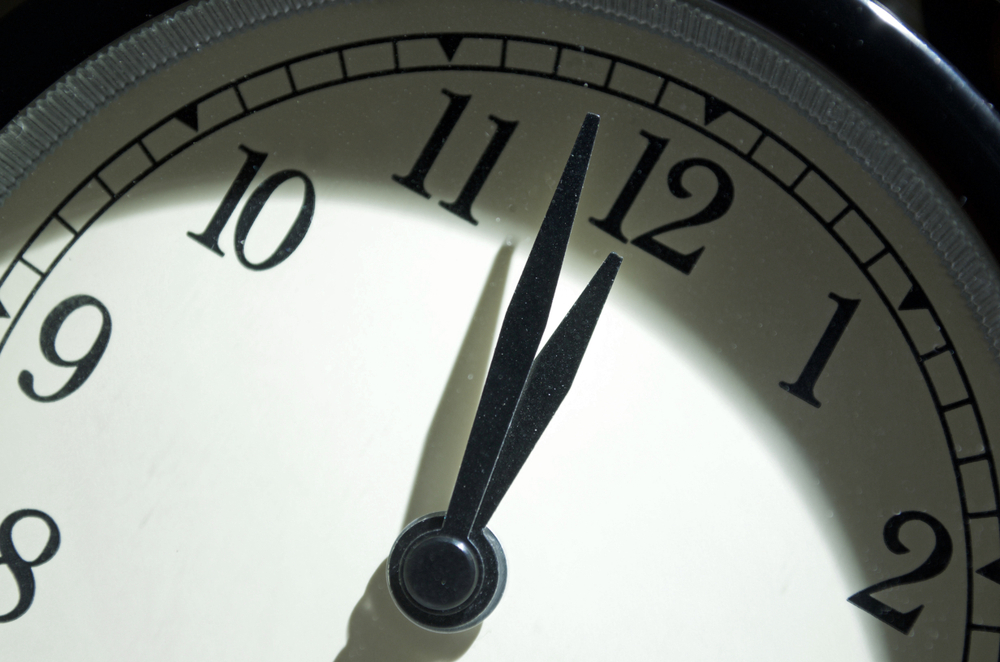

How these and other considerations will inform the Doomsday Clock's time in 2022 remain to be seen, but humanity is already in the realm of the two-minute warning period and every second counts, BAS President and CEO Rachel Bronson said in 2020. Globally, more than 330 million people have contracted COVID-19, and more than 5.5 million people have died, according to the Coronavirus Resource Center maintained by Johns Hopkins University and Medicine in Baltimore, Maryland. and has killed more than 850,000 Americans, the Centers for Disease Control and Prevention (CDC) reported on Jan. To date, COVID-19 has infected more than 66 million people in the U.S. The COVID-19 pandemic has also continued to surge, fueled by the emergence in 2021 of the highly contagious omicron variant by public resistance to vaccinations, lockdowns and mask mandates and by unequal access to vaccines and other preventative resources in countries worldwide. The top 10 ways to destroy planet Earth You can also read about how the Doomsday Clock was founded.- Doomsdays: Top 9 real ways the world could end
#Atomic scientists doomsday clock full
The full 2021 statement, including updates on the state of nuclear weapons around the world, is here. “It is time for all to take the actions needed to-quite literally-save the world,” the board wrote. It is now at three minutes to midnight, the. Maintained since 1947 by the members of the Bulletin of the Atomic Scientists ‘ Science and Security Board, the Clock represents an analogy for the threat of global nuclear war.

The full statement lists a number of actions needed to make the world safer, and urges all people to press their governments for action. In an announcement today the Bulletin of the Atomic Scientists (BAS) has moved the minute hand of the symbolic Doomsday Clock forward by two minutes. The Doomsday Clock is a symbol which represents the likelihood of a man-made global catastrophe. However, Bulletin members have constantly emphasized that the clock is not intended to make people fearful, but rather to spur them to action. Doomsayers also live in fear of the months June, July and August this year when the Earth is expected to experience a polar shift.

Though it was first created in response to nuclear weapons, the clock reckoning now includes climate change and “disruptive technologies,” such as bio- and cybersecurity. North Korean leader Kim Jong-un, seen delivering a speech at a national awards ceremony for nuclear scientists who contributed to the countrys Janunuclear test, may force the Doomsday Clock forward. In 1947, the Bulletin created the iconic Doomsday Clock to signal how close humanity was to self-destruction, and it meets every year to determine how much metaphorical time we have to avert global catastrophe. The Bulletin of the Atomic Scientists was created by a group of Manhattan Project scientists based at the University of Chicago who saw an immediate need for a public reckoning in the aftermath of the atomic bombings of Hiroshima and Nagasaki. As a result, many hundreds of thousands of human beings died needlessly.” Members of the Bulletin of the Atomic Scientists, (L-R), Lawrence Krauss, Robert Rosner and Sharon Squassoni move the Doomsday Clock hands to two minutes until midnight at a news conference in. “In this time of genuine crisis, governments too often abdicated responsibility, ignored scientific advice, did not cooperate or communicate effectively, and consequently failed to protect the health and welfare of their citizens. “The pandemic revealed just how unprepared and unwilling countries and the international system are to handle global emergencies properly,” the Bulletin board wrote. Atomic scientists: ‘Doomsday Clock’ reflects grave threat to world The Bulletin of the Atomic Scientists member Lynn Eden, right, and editor-in-chief John Mecklin, second from right, unveil the. Despite some positive indications of renewed nuclear agreements and action on climate change, the pandemic demonstrated fault lines in international ability to respond to disaster. In 2020, the hands of the clock moved to 100 seconds to midnight-the closest it has ever been to apocalypse. The Bulletin of the Atomic Scientistsannounced that the hands of the Doomsday Clock remain at 100 seconds to midnight in 2021, calling the COVID-19 pandemic a historic “wake-up call” for humanity to strengthen international cooperation.


 0 kommentar(er)
0 kommentar(er)
